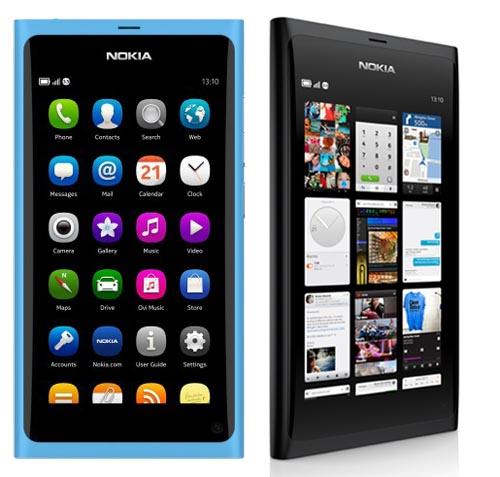
While MeeGo has been in development for quite some time, the mobile software hasn’t found its way to a mobile phone up until now. Obviously, while Nokia has put its chips into the hope of another mobile OS entirely, they want MeeGo to come out swinging. And what better way to do that, then to eschew the standard elements of a smartphone that we all know and love, and try to embrace an element that other manufacturers are just starting to look at? Specifically, Nokia’s MeeGo 1.2 looks to drop away the physical buttons that people have become accustomed to, in hopes of embracing an all-touch experience that users will enjoy from the moment they pick up the device.
It’s no secret that manufacturers are trying to get rid of the hardware keys. Over the last few years, while some companies have hung onto the physical buttons, others have tried their best to minimize their impact on the user experience, one way or another. We’ve seen how capacitive touch buttons have gradually become the norm, finding some strange middle ground between the hardware keys that some love, and lessening the amount of hardware aesthetics that peek out.
But, no matter if they are capacitive touch keys or buttons that we can literally press down, they’re still buttons that we have to utilize to make any sense of the mobile operating system of choice. That is, for now. Google is looking to change that, as the next version of Android for smartphones – Ice Cream Sandwich—is set to get rid of the hardware keys. The result should be a user experience that’s completely dependent upon the touchscreen, where users have to swipe and tap their way through the UI to get to what they want.
And that’s exactly what Nokia’s MeeGo 1.2, with its Harmattan tweaks does, too. The UI was built to not need those hardware keys, and therefore the experience is built around the touch user interface. Users will have three homescreens to choose from, and they will be able to easily access the application homescreen by swiping from an edge of the display, towards its center. It’s a quick way to exit a running application, and one that makes accessing the main homescreen all that much easier. It also shows that hardware keys really aren’t essential.
But, old habits are hard to break, aren’t they? The hardware keys that people have known, loved and used over the years are probably not just going to go away. And that has nothing to do with the fact that Ice Cream Sandwich from Google won’t be on every Android-powered handset, or that MeeGo 1.2 is only on one handset as of right now. But, as of right now, the hardware keys are still an important part of our everyday phones. Companies like Microsoft are still dependent on the hardware keys, so much so in fact that it’s part of the design of the hardware running their software. And Apple doesn’t seem ready to get rid of that single Home key, now do they?
So, will MeeGo 1.2 be able to cull people away from the hardware keys? Or will it be a dual effort, independently executed in their own way, by Nokia and Google that does the trick? More to the point, will MeeGo 1.2 ever have a chance to really show off what an all-touch UI is all about? Let me know what you think in the comments below.